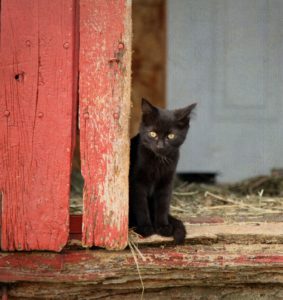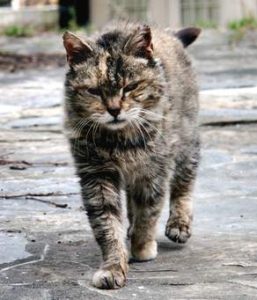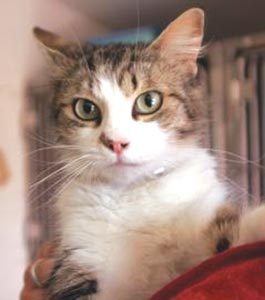
The Yavapai Humane Society (YHS) has a plethora of lovable senior (5 years and older) cats available for adoption. These sweet animals have many good years of love left – making them ideal pets. All adoption fees for all YHS cats and kittens have been waived for the month of June. That’s a real deal because YHS cats are spayed or neutered, vaccinated and micro-chipped – that is over a $400 value to you – for whatever you are willing to donate.
If you are a senior citizen you might be especially interested in knowing that according to the Journal of the American Geriatrics Society there are many health benefits for seniors who have a pet or two. In fact, the Journal states the benefits extend to the seniors, the pets and society as a whole. Geriatric researchers found seniors with pets are more active than seniors without pets and they score higher in their ability to carry out normal activities of daily living. Many positive effects on physical well-being are identified, including a healthy ability to fend off isolation and loneliness.
The Journal report says that pet ownership has a statistically significant effect on the physical health of older people. Further, the caretaking role involved in pet ownership may provide older people a sense of purpose and responsibility and encourages them to be less apathetic and more active in day-to-day activities. In fact, researchers found that elderly people who lacked strong social support (family and friends) remained relatively emotionally healthy during life crises compared with non-pet-owners placed in similar situations. The evidence demonstrates that pets provide real health benefits to the elderly.
10 Health reasons why pets are great for seniors
1. Pets Lower Blood Pressure: A study of health patients showed that people over 40 who own pets had lower blood pressure than people who did not have pets. Another study showed that talking to pets decreases blood pressure.
2. Fewer Trips to the Doctor: Seniors who own pets go to the doctor less than those who do not. In a study of 1,000 Medicare patients, even the most highly stressed pet owner in the study had 21 percent fewer physician’s contacts than non-pet owners.
3. Less Depression: Studies show that seniors with pets do not become depressed as often as those without pets.
4. Easier to Make Friends: Seniors with pets meet more people and like to talk about their pets.
5. Seniors Become More Active: Seniors with pets are generally more active than those without pets.
6. Pets are Friends: Most everyone, but especially seniors, will say that pets are their friends.
7. Pets Ease Loss: Older people who suffer the loss of a spouse and own a pet are less likely to experience deterioration in health following that stressful event.
8. Pets Fight Loneliness: You are less likely to be lonely with a feline friend around.
9. Taking Better Care of Themselves: Seniors take good care of their pets and better care of themselves when they own a pet.
10. Sense of Security: Pets help seniors to feel that someone they trust is always around.
If you are a senior citizen and want to take advantage of all these health benefits please consider adopting one or two of our senior cats today. All cat (and kitten) adoption fees are waived for everyone during the month of June; and for senior citizens (59 and older) adoption fees are waived all the time for both cats and dogs over 5 years of age.
Health benefits are not restricted to seniors only but apply to all people of all ages. Adopt a pet today!




 Although many of us think our dog is clever enough to understand us, this confidence has never been tested by science – until now.
Although many of us think our dog is clever enough to understand us, this confidence has never been tested by science – until now.

 I want to talk about senior cats. These lovable animals have many good years of love left – making them ideal pets for senior citizens.
I want to talk about senior cats. These lovable animals have many good years of love left – making them ideal pets for senior citizens.